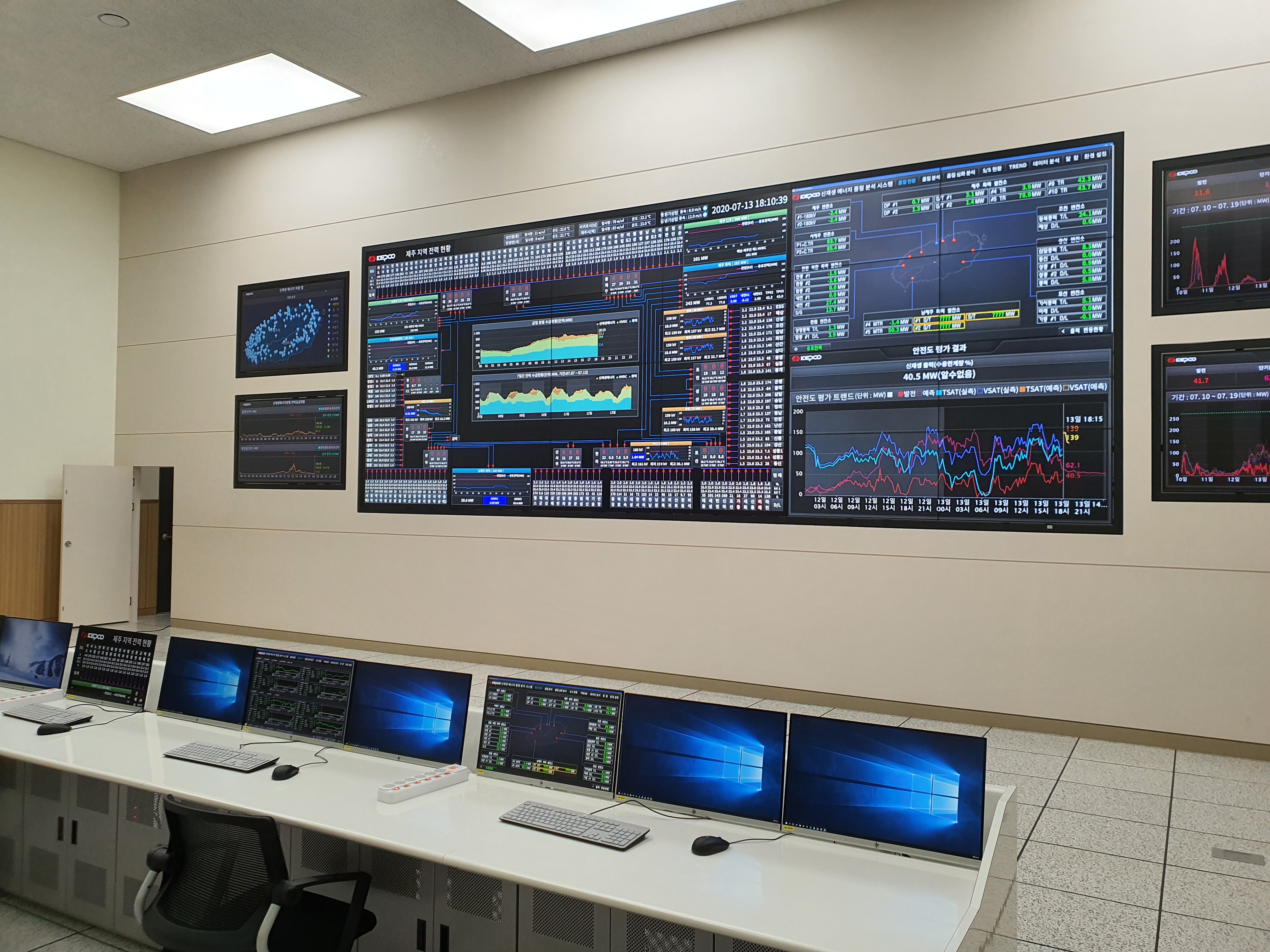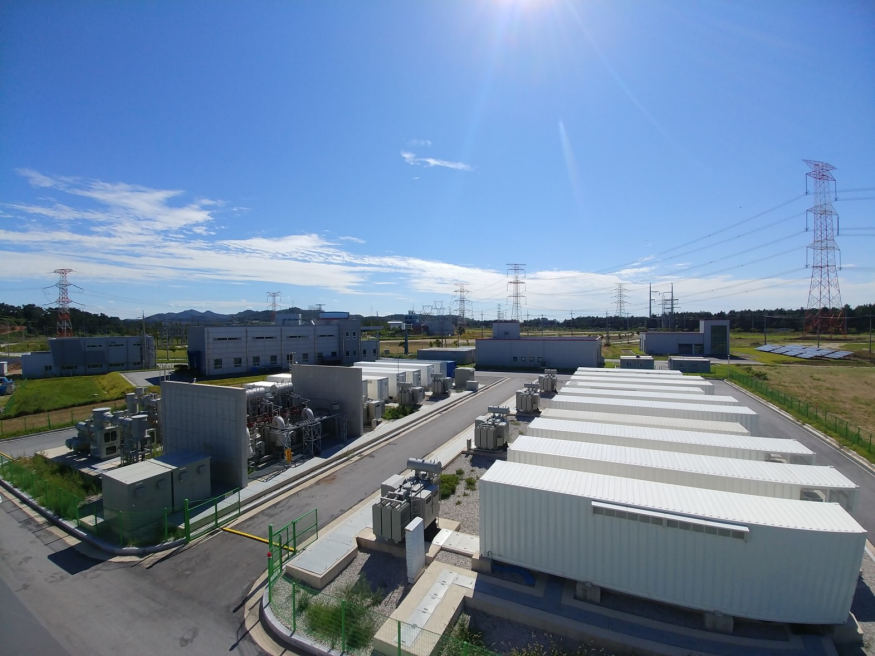Power System Research Lab.
Fields of our research Power System Research Lab.The Power System Research laboratory is dedicated to leading a paradigm shift in the electric power industry by expanding renewable energy to achieve carbon neutrality and enhancing the efficiency and eco-friendliness of power equipments. Our focus areas include: "Building a future power grid", "Leading high-efficiency", “High-capacity transmission technology", "Developing eco-friendly substation devices and automating substation facilities", "Securing HVDC design and operation technology" and "Disaster prevention and safety of power infrastructures." We are actively conducting research to establish a solid foundation for implementing a stable and cost-effective power grid. This involves advancements in power system planning, analysis, and application technology, such as the development of monitoring of wide area system based on PMU, CFI technology, and power grid ESS application technology. Additionally, we are localizing VSC-HVDC conversion facilities and integrating them into real systems. In order to improve the acceptability of renewable energy and connect the east-west grid, we are developing new material transmission equipment and transmission technologies aimed at enhancing the efficiency and capacity. Furthermore, we are committed to reducing greenhouse gas emissions through the development of eco-friendly substation equipment and operation technologies, such as high-efficiency and eco-friendly Eco GIS/M.Tr. We are also ensuring the reliability of substation equipment through preventive and diagnostic systems and developing new power equipment diagnostic technologies to prevent failures. Our research extends to the development of reliability-based design technology for power infrastructures, climate change, and natural disaster prevention technology as well as seismic retrofit technology. The Power System Research laboratory not only drives innovation in power system technology but also actively fosters the development of new businesses to adapt to the evolving structure of the electric power industry.
Power System Operation
We perform real-time monitoring and fault analysis of wide area system based on PMU technology in order to resolve the instability of power system operation. Moreover, we secure power system stability through CFI technology demonstration, and develop flexible connection technology & renewable management system to accommodate a high renewable energy penetration in power systems.
IBR·Inertia Supply
As wind and solar generation increases, we demonstrate inverter-based ESS application to secure the system flexibility. We also develop the flywheel synchronous condenser and Grid-forming converter to increase system inertia for grid stability enhancement.
Underground transmission line operation and reliability evaluation
To prevent failures resulting from increasing demand and aging and to ensure operation of underground transmission lines, we are advancing underground cable operation technology and diagnosis technology. These include real-time monitoring of AC and HVDC cables, hybrid HVDC transmission line failure response protection technology, and AI-based partial discharge diagnosis. In addition we are conducting research on improving system operation efficiency and increasing transmission capacity as well as the development of fault recovery joint boxes, duct cooling system, and Joint of Cu-Al dissimilar conductors. Furthermore, we perform reliability evaluations of up to 500kV AC and up to 800kV HVDC cables, as well as KEMA joint international certification testing.
Substation Facility Failure Prevention/Analysis
We perform ground analysis and transient analysis respond to the current issues of KEPCO’s substation facilities, and provide technical supports for the failure analysis and the reliability and compatibility evaluation test of substation facility comprehensive preventive diagnosis system. In addition, we are developing transient stress reduction technology, condition monitoring/preventive diagnosis technology and securing wide area power system protection reliability to save OPEX/COPEX budgets and improve stability of power facilities.
Power Infrastructure Design and Maintenance
The development of new construction technologies for optimal design , environmentally friendly and safe construction, as well as smart maintenance of electric power infra-structures such as transmission tower foundations and tunnels, has been intensively studied. We are developing reliability-based design technology to simultaneously improve the structural safety and economic feasibility of transmission tower foundations, as well as disc cutter wear measurement and TBM(Tunnel Boring Machine) life prediction for timely construction completion of power facility tunnel. We are also playing a leading role in the development of non-destructive detection technology for underground facilities, and ground subsidence risk prediction using satellite radar technology for smart monitoring.
Power System Analysis
Efforts are being made to secure advanced power system analysis technology to address the increasing challenges in power system planning and operation, driven by the growth of renewable energy and specialized facilities based on control (such as HVDC, FACTS, ESS, etc.). Specifically, research is being conducted on easing generation constraints, assessing the capacity for renewable energy integration, conducting precise analysis of HVDC, and utilizing research to enhance the resilience of power grid restoration.
Overhead Transmission design and operation
In order to improve the acceptability of renewable energy and connect the east-west grid, we has developed new materials and technologies to enhance the efficiency and capacity of power transmission facilities. The calculation technology of real-time dynamic power rating(FDLR), capacity increase technologies(Uprating) and new overhead conductor using graphene materials have been studied for increasing capacity and efficiency. In addition, research and technical support are provided for use in the field, such as the development and site application of equipment construction/diagnosis technologies for overhead transmission, the development and demonstration of design standards for climate change, the simulation of electric environment(electromagnetic fields, noise, EMI, etc.) in the transmission and substation equipments.
ECO Substation Facility Operation
We have developed and demonstrated 170kV Eco GIS using eco-friendly insulating gas to replace SF6 gas, which accounts for a significant portion of carbon emissions. We are developing optimal operation technology as Eco-GIS is applied to new substations from 2024 and performing reliability evaluations of newly developed substation facilities using the substation equipment demonstration test site.
HVDC Design and Operation
We have been focused on new technology that can expand the transmission network that connects carbon-free sources far from consumers in a timely manner and operate it efficiently. Projects for advanced FACTS application are in progress in order to reduce volatility and increase stability when connecting renewable energy generation such as increasing offshore wind power. Localization and demonstration studies of HVDC and MTDC, which are advantageous for long-distance large-capacity power transmission using submarine and underground cables, are being conducted, and focus on securing the full-cycle design/operation technology of VSC-HVDC.
Earthquake Resistance & Structural Integrity
We are developing technology to ensure the safety of power facilities/structures against natural disasters such as earthquakes and typhoons, and to optimize structural design considering economic efficiency and eco-friendliness. We are conducting research to improve the seismic performance of existing power facilities, and are pursuing research to expand real-time earthquake damage prediction/notification technology for substations to power generation companies. In addition, we are developing reliability-based optimal design technology for transmission tower structures, and designing environmentally harmonized tower in response to complaints during construction.




